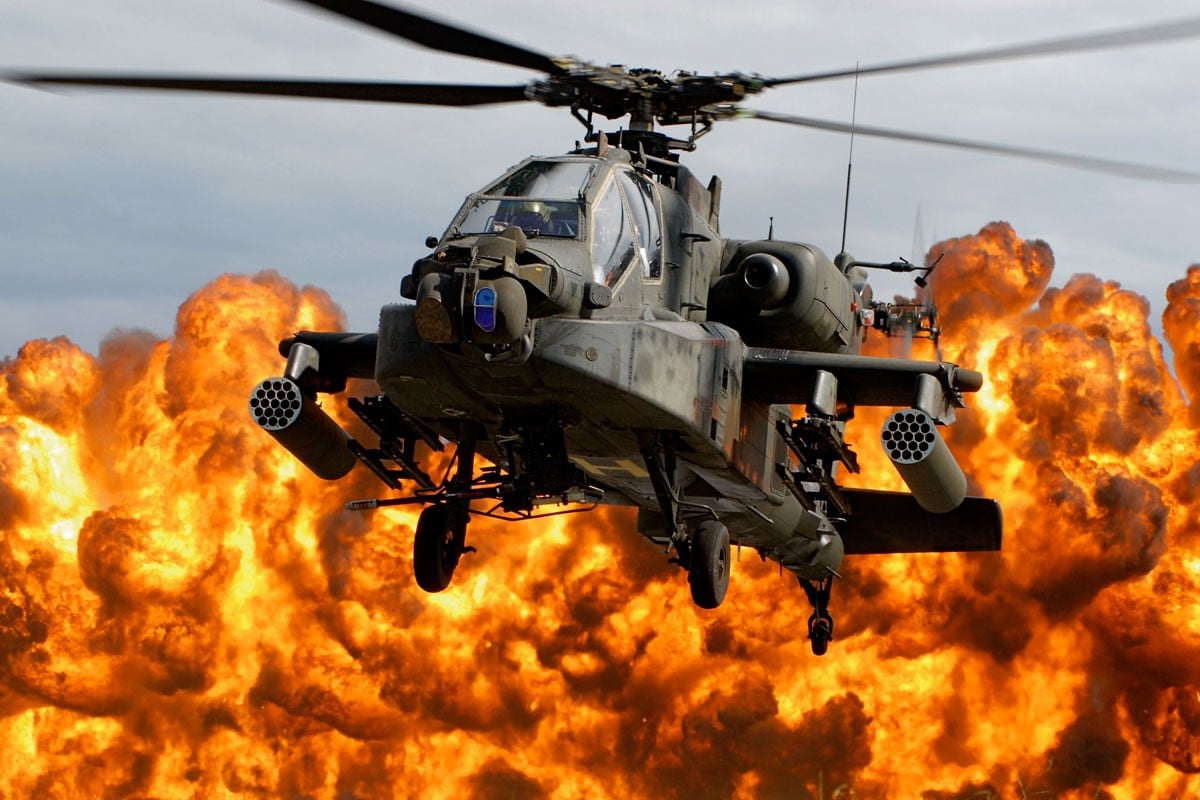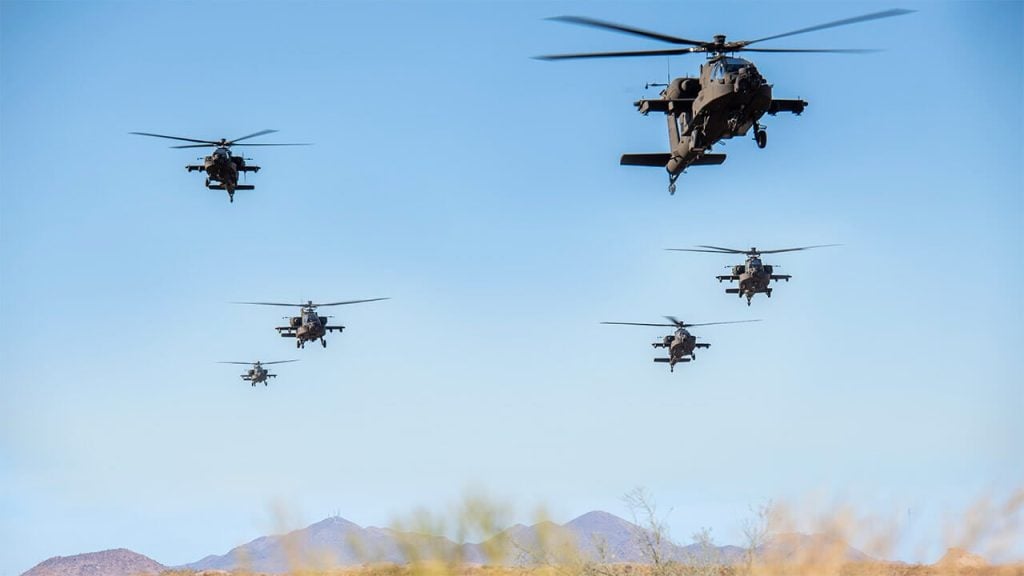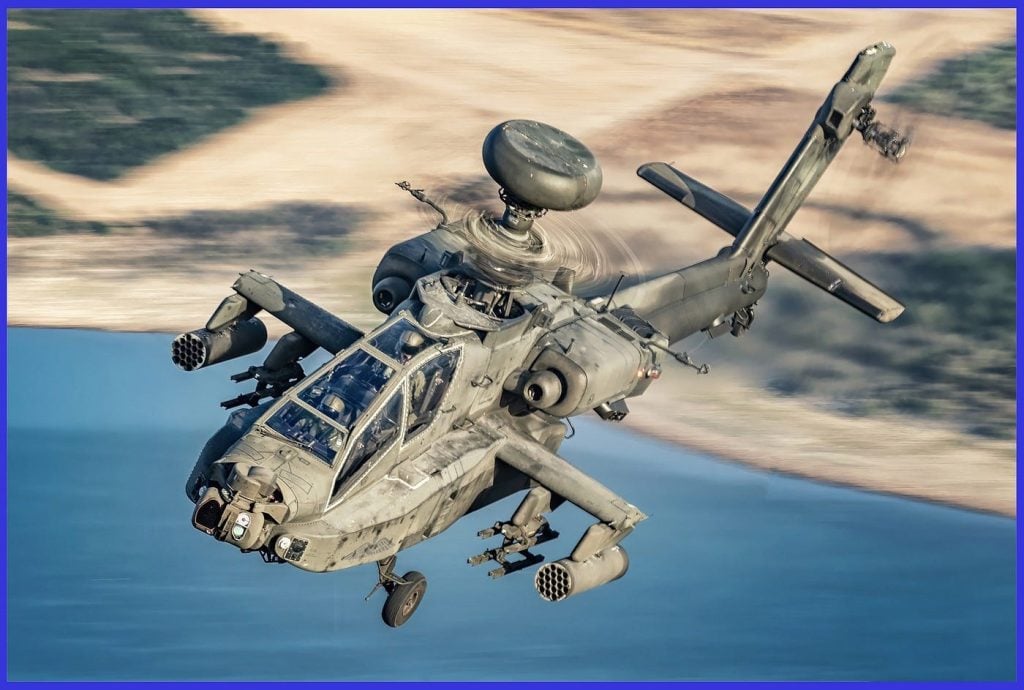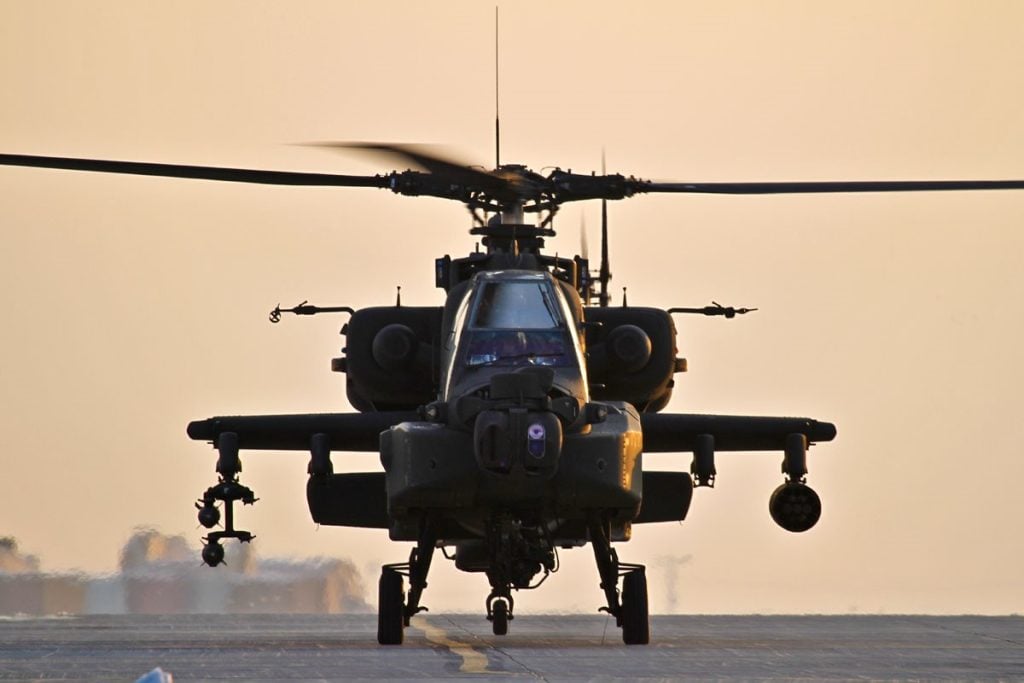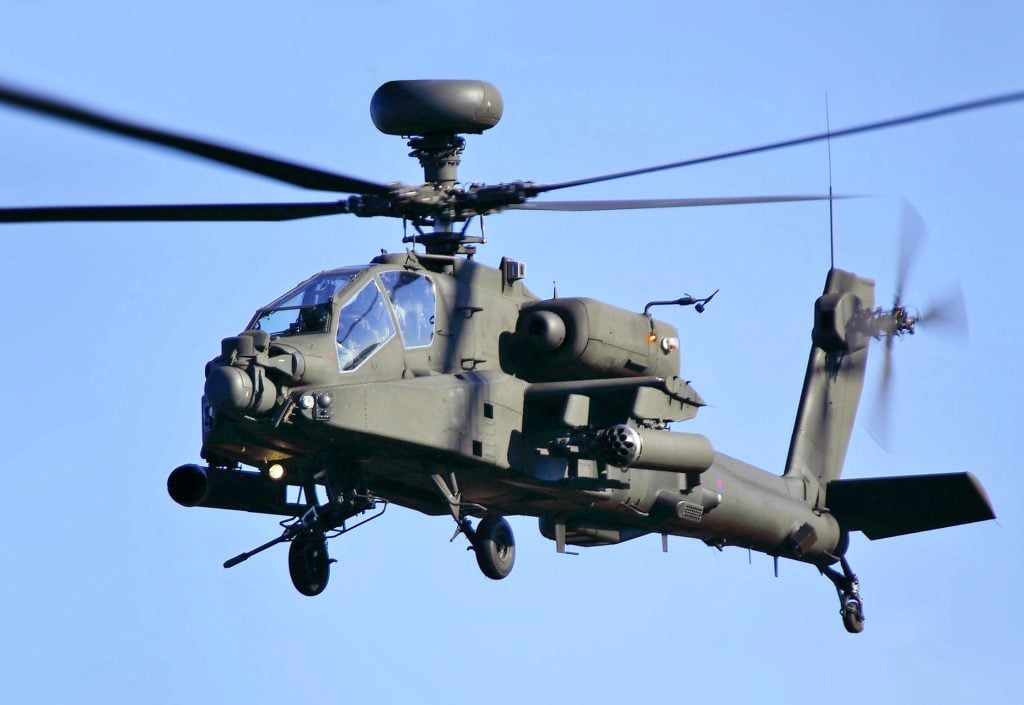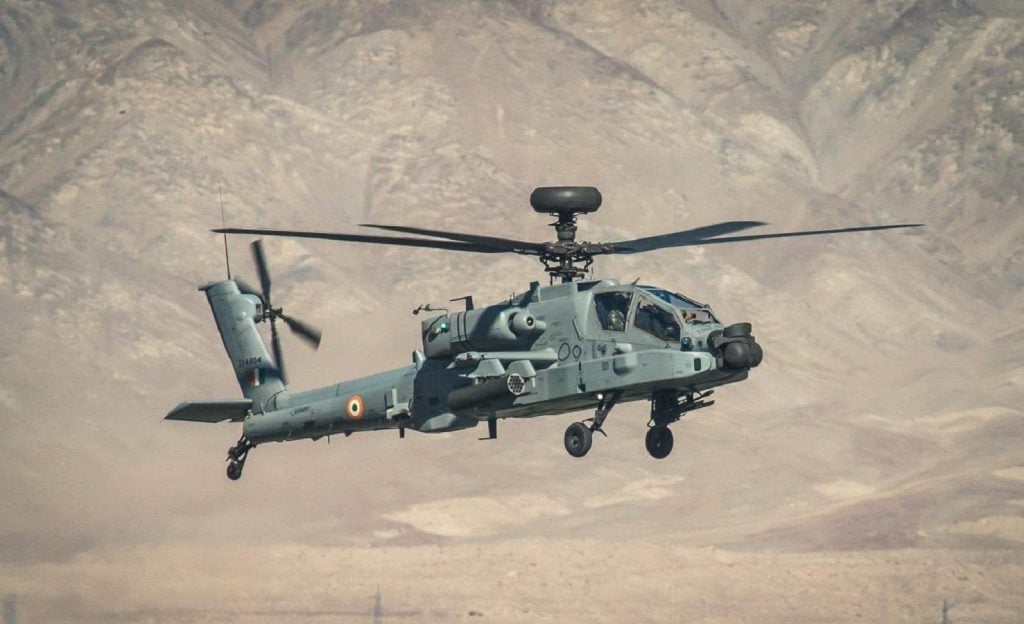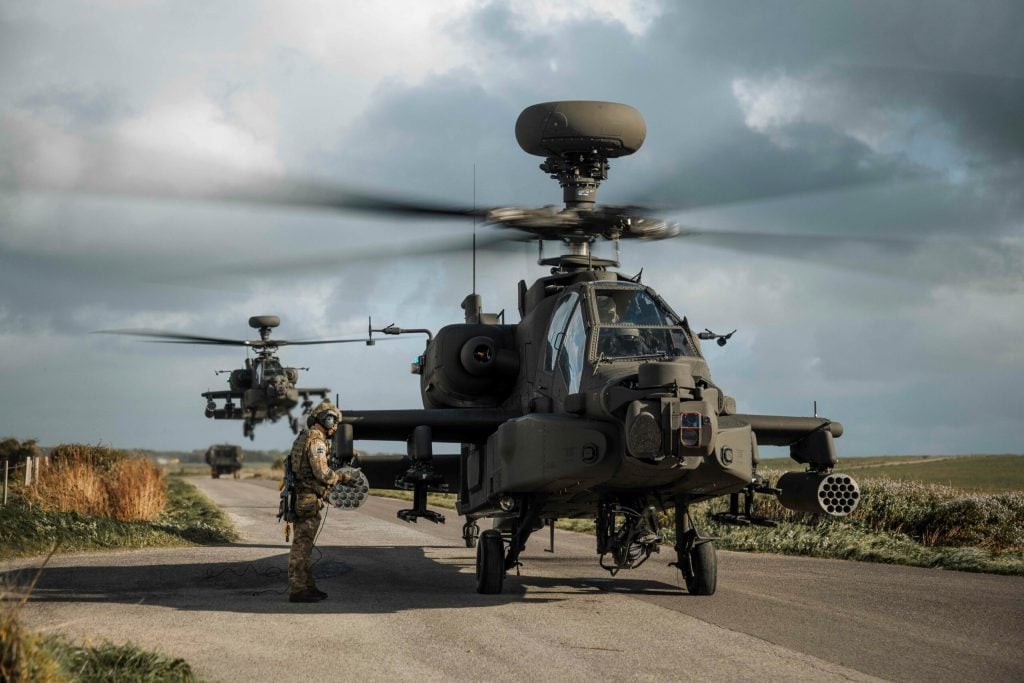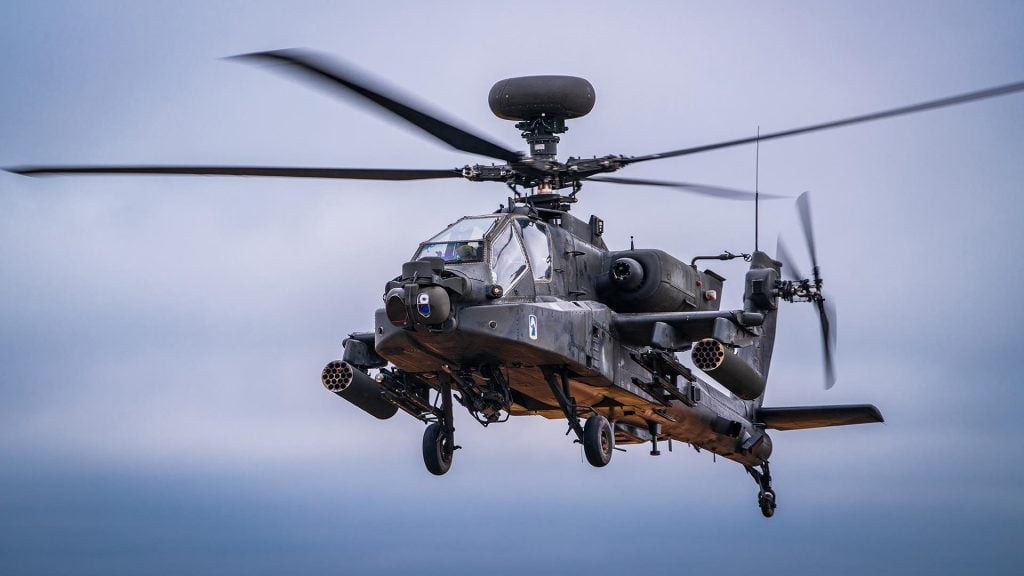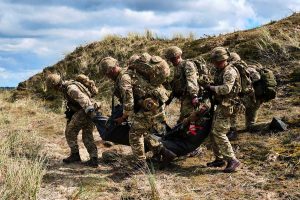The Apache AH-64 is a formidable attack helicopter that has played a crucial role in numerous military conflicts worldwide since its introduction in the 1980s. Designed and developed by Boeing Defense, Space & Security, this twin-turboshaft aircraft is renowned for its advanced sensors, targeting systems, and anti-armor capabilities, making it a vital asset in supporting ground forces during combat operations.
In this comprehensive article, we will delve into How Apache Helicopters Enhance Ground Combat, exploring its specialized systems, deployment strategies, and real-world combat experiences. By understanding the Apache’s unique capabilities, we can appreciate how this iconic helicopter has become an indispensable tool in modern warfare.
How 5 New Technologies Are Shaping US Military Aircraft
The Apache’s Sensor Suite
At the heart of the AH-64 Apache’s combat prowess lies its impressive array of sensors and targeting systems. The helicopter’s Integrated Helmet and Display Sighting System (IHADSS) allows the pilot or gunner to seamlessly control the 30mm automatic M230 Chain Gun by simply directing their gaze. This revolutionary system, coupled with the Target Acquisition and Designation System (TADS) and the Pilot Night Vision System (PNVS), provides the Apache crew with unparalleled situational awareness and the ability to engage targets with remarkable precision, even in low-light or adverse weather conditions.
The latest iteration of the Apache, the AH-64E, further enhances these capabilities with the integration of Lockheed Martin’s Arrowhead (MTADS) targeting system. This advanced system replaces the older TADS, offering improved target acquisition and tracking, as well as enhanced image quality and stabilization. With these sophisticated sensors, the Apache can simultaneously detect and track multiple targets, providing ground forces with a decisive edge in combat.
Precision Firepower
The AH-64 Apache’s formidable firepower is another key factor in its ability to support ground troops. Equipped with a 30mm automatic M230 Chain Gun, the helicopter can accurately engage a wide range of targets, from armored vehicles to hardened enemy positions. According to Boeing, the Apache is designed to achieve at least one hit for every 30 shots fired at a wheeled vehicle at ranges between 2,625 and 3,935 feet (800 to 1,200 meters).
In addition to the Chain Gun, the Apache can carry a diverse array of air-to-ground missiles, rockets, and guided munitions, allowing it to effectively neutralize a variety of threats. The AGM-114 Hellfire missile, in particular, has proven to be a highly effective anti-tank weapon, capable of penetrating even the most advanced armor. The Apache’s ability to precisely target and destroy enemy armor and fortifications is a critical capability in supporting ground operations.
The Apache’s Extended Reach
One of the key advantages of the AH-64 Apache is its ability to operate beyond the forward line of troops (FLOT), a capability that sets it apart from many other attack helicopters. This extended reach allows the Apache to engage targets deep within enemy territory, providing ground forces with critical fire support and reconnaissance without putting them directly in harm’s way.
During the invasion of Panama, Operation Just Cause, the Apache’s first combat deployment, the helicopter participated in over 240 hours of combat operations, both day and night, delivering devastating blows to ground targets. This demonstrated the Apache’s versatility and its ability to operate effectively in a variety of environments and conditions.
Synergizing with Other Air Assets
The AH-64 Apache’s capabilities are further enhanced through its integration with other air assets, such as the USAF’s Fairchild Republic A-10 Thunderbolt II and the USMC’s McDonnell Douglas AV-8B Harrier II. These joint attack teams (JAAT) allow the Apache to work in coordination with fixed-wing aircraft, leveraging their respective strengths to achieve greater mission success.
The Apache’s advanced sensors and targeting systems can identify and designate targets, while the supporting fixed-wing aircraft provide additional firepower and suppression of enemy air defenses. This synergistic approach allows ground forces to benefit from a comprehensive air support package, ensuring they receive the necessary protection and firepower to accomplish their objectives.
Protecting the Apache in Combat
Recognizing the inherent risks of operating in hostile environments, the AH-64 Apache is equipped with a robust suite of survivability and countermeasure systems. These include the Passive Infrared Countermeasures, which enhance the helicopter’s ability to evade heat-seeking missiles, and the Ground Fire Acquisition System (GFAS), which can detect and locate the source of ground-based weapons fire.
The GFAS, consisting of integrated sensor pods and a thermographic camera, enables the Apache crew to quickly identify and neutralize threats, providing an additional layer of protection for the helicopter and the ground forces it supports. These advanced countermeasures and survivability features ensure the Apache can maintain its critical role in supporting ground operations, even in highly contested and complex battle spaces.
Adapting to Diverse Operational Environments
The AH-64 Apache’s versatility extends beyond its combat capabilities, as it can be deployed in a variety of operational environments to support ground troops. In addition to its primary role as an attack helicopter, the Apache can also be used for personnel and equipment transport, further enhancing its value to ground forces.
Whether operating in the urban sprawl of a city, the rugged terrain of mountainous regions, or the vast expanses of a desert, the Apache’s advanced systems and adaptable design allow it to excel in a wide range of operational scenarios. This versatility ensures the helicopter can effectively support ground troops, regardless of the specific challenges posed by the operational environment.
Enhancing Situational Awareness and Decision-Making
The AH-64 Apache’s advanced sensor suite and data-sharing capabilities play a crucial role in enhancing the situational awareness and decision-making process of ground commanders. The helicopter’s ability to simultaneously detect and track multiple targets, combined with its long-range reconnaissance and targeting capabilities, provides invaluable real-time intelligence to ground forces.
This enhanced situational awareness allows ground commanders to make more informed decisions, enabling them to effectively allocate resources, coordinate maneuvers, and respond to rapidly evolving battlefield conditions. By serving as a vital information conduit between the air and ground domains, the Apache helps to create a unified, data-driven battlespace, empowering ground troops to achieve their objectives with greater efficiency and precision.
Enduring Relevance in Multi-Domain Operations
As the nature of warfare continues to evolve, the AH-64 Apache remains a critical asset in the US Army’s arsenal, particularly in the context of Multi-Domain Operations (MDO). This emerging operational concept emphasizes the integration of air, land, sea, space, and cyber domains to achieve strategic objectives.
The AH-64E, the latest variant of the Apache, has been specifically designed to excel in this complex, highly contested battlespace. With its enhanced sensors, software, and weapons performance, the AH-64E is well-equipped to detect, track, and engage targets across multiple domains, providing ground forces with the firepower and support they need to succeed in the modern battlespace.
Adaptability and Modernization
As military technology continues to evolve, the AH-64 Apache has undergone a series of upgrades and modernization efforts to ensure its continued relevance on the battlefield. From the integration of the Arrowhead (MTADS) targeting system to the increased engine power and improved avionics, the Apache has consistently adapted to meet the demands of modern warfare.
These ongoing upgrades and enhancements not only improve the helicopter’s combat capabilities but also extend its service life, ensuring that the AH-64 remains a formidable asset in supporting ground troops for years to come. By continually investing in the Apache’s development, the US Army demonstrates its commitment to providing ground forces with the most advanced and effective air support available.
The Apache’s Enduring Legacy
The AH-64 Apache’s legacy as a trusted partner for ground troops is firmly established, with its combat record spanning decades of military operations around the world. From the invasion of Panama to the conflicts in Afghanistan and Iraq, the Apache has consistently proven its worth as a versatile and lethal attack helicopter, providing ground forces with the firepower, precision, and support they need to achieve mission success.
As the US Army and its allies continue to face evolving threats and operational challenges, the AH-64 Apache remains a vital component of their combat capabilities. Its advanced sensors, targeting systems, and firepower, combined with its ability to operate beyond the forward line of troops, make the Apache an indispensable asset in supporting ground troops in the most demanding and high-stakes combat environments.
How UAVs Work in Air, Land, and Sea Operations
Conclusion
The AH-64 Apache’s role in enhancing the effectiveness and lethality of ground troops is undeniable. Through its impressive sensor suite, precision firepower, extended reach, and integrated operations with other air assets, the Apache has become an essential component of modern warfare. Its ability to provide ground forces with unparalleled air support, reconnaissance, and targeting capabilities has made it a trusted partner for soldiers on the frontlines.
As the US Army continues to adapt to the evolving nature of combat, the AH-64 Apache will undoubtedly remain a crucial asset in its arsenal. With ongoing modernization efforts and a proven track record of success, the Apache’s legacy as a formidable attack helicopter and a reliable ally for ground troops is poised to endure for years to come.
FAQs
1. What is the combat radius of the AH-64 Apache?
The AH-64 has a combat radius of about 150 kilometers. With a single external 230-gallon fuel tank, its combat radius extends to around 300 kilometers (depending on temperature, pressure altitude, fuel burn rate, and airspeed). The AH-64 can be transported by C-5, C-141, and C-17 aircraft.
2. What are the capabilities of the AH 64D?
The helicopter can hold up to 1,200 rounds of ammunition. The AH-64D is equipped with the Lockheed Martin/Boeing AGM-114D Longbow Hellfire air-to-surface missile, featuring a millimeter-wave seeker that enables the missile to operate in full fire-and-forget mode. It has a range of 8 to 12 kilometers.
3. What is the role of the Apache in the AH-64?
Performs rear, close, and shaping missions, including deep precision strikes. Executes distributed operations and precision strikes against moving targets, and provides armed reconnaissance as needed during the day, night, in obscured environments, and adverse weather conditions.
4. How long can an Apache helicopter stay airborne?
With a full combat load and full fuel, an Apache can stay airborne and operational for 2.5 hours. Its standard climb rate ranges from 1,595 feet per minute (486 m/min) to 1,775 feet per minute (541 m/min), depending on air temperature and density (hotter air means lower density and reduced performance).
5. How many Hellfires can an Apache carry?
16 Hellfires
